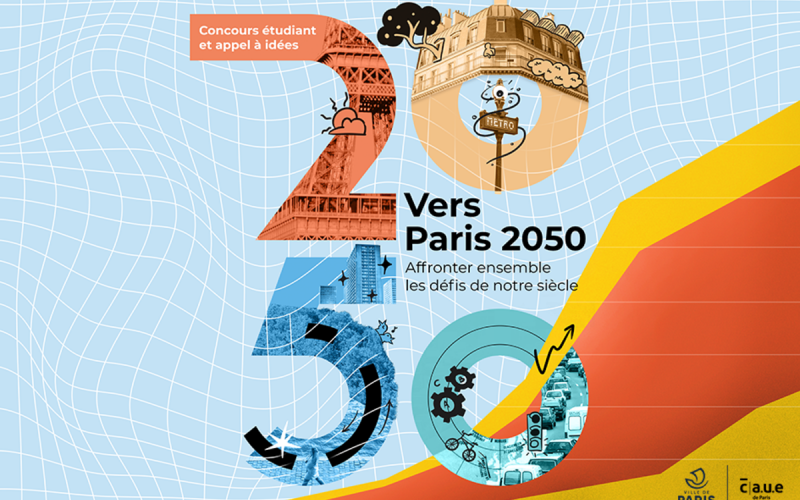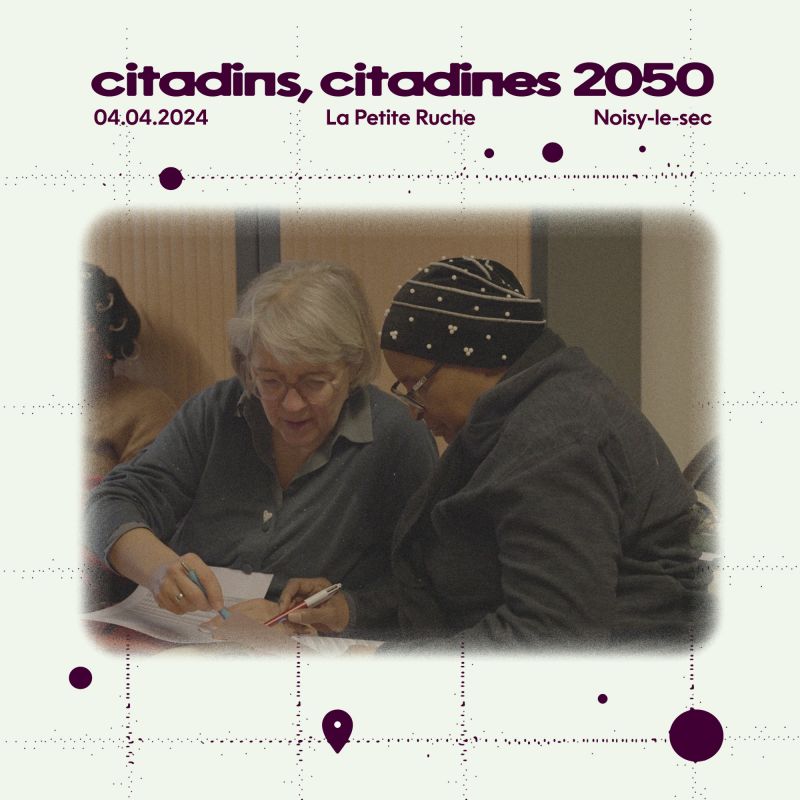
Context and objectives
In discussions with various local authorities that have been working on their climate adaptation plans, we observed that the participatory part of these foresight approaches were limited by the fact that it is always the same people who are involved: directors of the city and highly integrated citizens. Our proposal is to:
-
Diversify the viewpoints, by seeking out audiences that are missing from the consultation process: citizens from working-class neighborhoods who, while committed, do not often take part in participatory democracy mechanisms; and “professionals of the city,” those who maintain it, operate its networks and services, etc.
-
Diversify the forms of participatory creation beyond writing: by organizing theater and art workshops, etc.
-
To report on what happens during the collective creation processes, and not only on their results, in the form of an ethnographic documentary film.
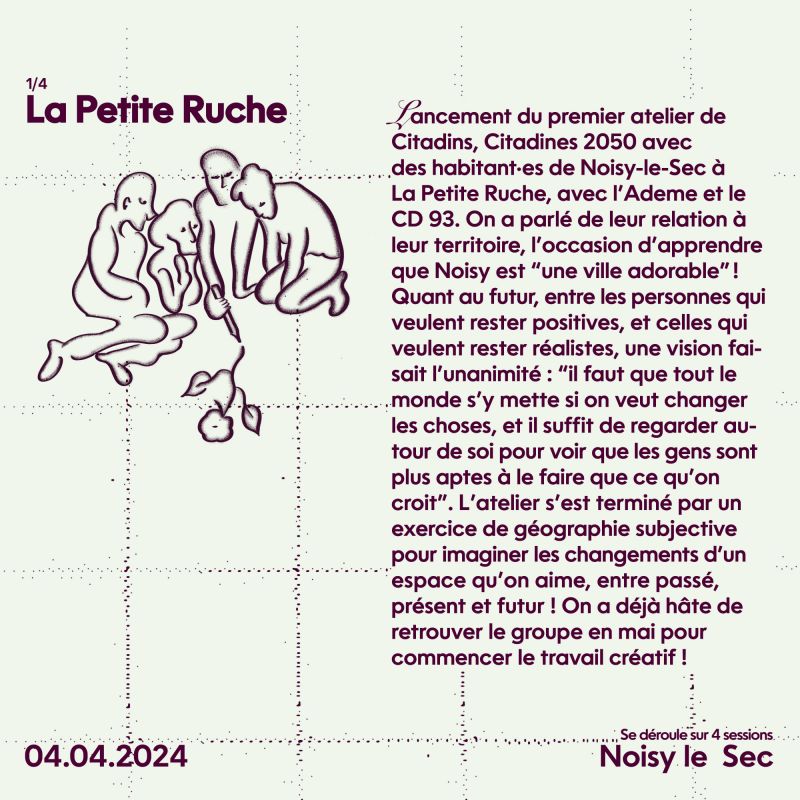
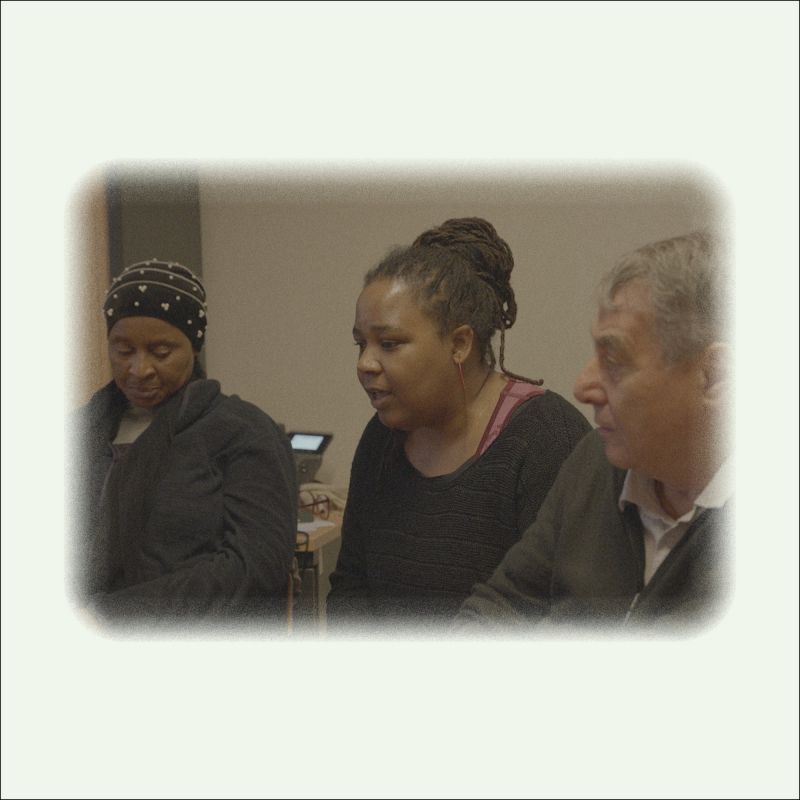
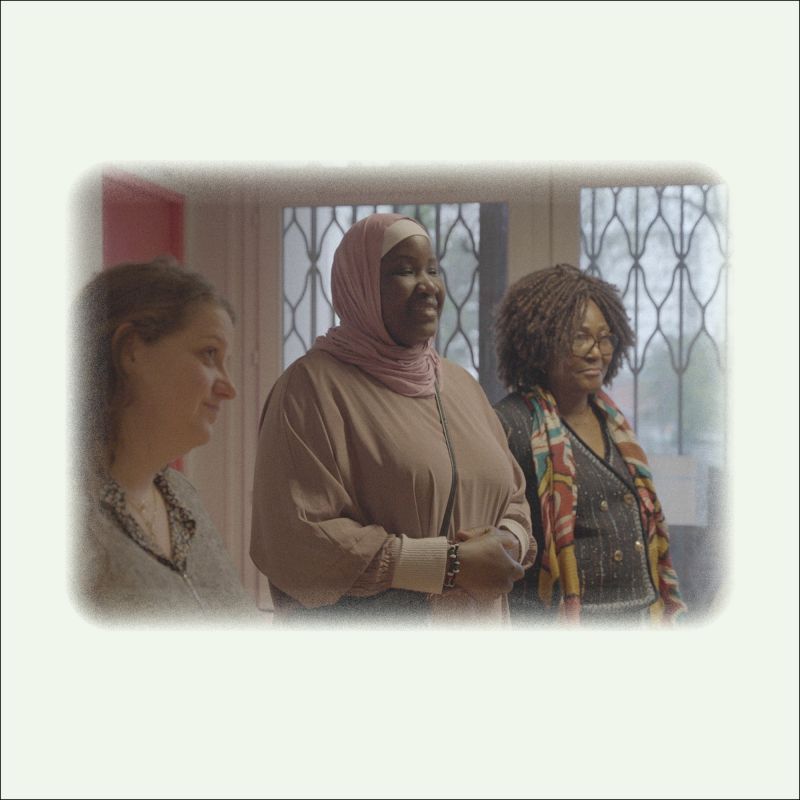
The process
Within each of the three territories, Citadins, Citadines 2050 will :
- Forge partnerships with two types of actors :
-
Non-profits involved with citizens from working-class neighborhoods of Paris, some of which already have creative approaches;
-
Businesses and public institutions whose activities concern the functioning of the city: construction and maintenance of equipment, mobility, water, energy, waste…
-
Organize with these partners and their audiences a series of creative workshops. Based on our mcreative foresight methods, led by artists, these workshops will produce narratives of the transformations of the different territories as seen through the eyes of their citizens and professionals, and expressed in a variety of forms.
-
Present all of the productions during an open event, organizing the exchange between the participants and the public.
-
Produce an analysis based on the content of the productions and the documentary film, which will shed light on avenues and lessons to be learned in order to feed the work on the cities Resilience Plans, as well as the strategic thinking of the other project partners. But also, draw lessons from the way in which we can create vertuous dynamics for the participants and the cities in preparation of the necessary climate adaptation.
The partners
We wish to allow the images of Paris’s, Marseille’s and Noisy’s resilient future be embodied by diverse audiences in order to allow more citizens to build capacities and grow awareness towards the future of their city.
We are working with non-profits that explore or wish to explore creative formats and reflect with their publics around issues that concern them, as much today as in the future:
-
The LABEC (supported by the non -profit Plus loin): Located in the 20th arrondissement, it offers a space to practice theatrical improvisation and to help inhabitants of the neighborhood to gain confidence, improve their theater skills, and even become professionals in this field.
-
La Petite Ruche: a community grocery shop in the city of Noisy-le-Sec that works with the local social centre to help families through difficulties.
While being actively supported by the Paris City Council, the departmental council of la Seine-Saint-Denis, and the Environmental and Energy Management Agency (ADEME).
Partnerships
We are still open for partnerships! If you are a non-profit, professional or entreprise whose mission and actions are aimed towards social transformation or building and/or (re)activating the city (transport, real estate, garbage collector, insurance etc.) get in touch !
What is creative foresight?
We describe our approach to anticipation as “creative foresight”. It is based on the double use of elements from profound research and analysis (“factors of change”, “tensions”) and fiction. This singular use of fiction as a methods has two theoretical and practical foundations:
-
The future is in essence an imaginary construction. This construction can be very focused when it comes to defining a strategic plan in a fundamentally stable environment. On the other hand, if we are interested in emergencies, in exploring new possibilities or in projecting ourselves into a context that is different from the present, then we must give liberties to actors’ and participant’ capacity for imagination. This approach is, in our view, collective in nature.
-
The use of fiction facilitates participation and exchange by erasing hierarchical differences and the weight of expertise. By appealing to their subjectivity, among other things, it invites participants to become involved and to see themselves as actors of change. It allows us to go beyond anticipation, which is too often thought of as an adaptation to external changes (resilience, risk management, adaptation, etc.). Our approach integrates the intervention of artists and designers in the animation of groups and the sensitive translation (literary or plastic) of the collective work.
Project director contact:
juliette.grossmann@plurality-university.org
